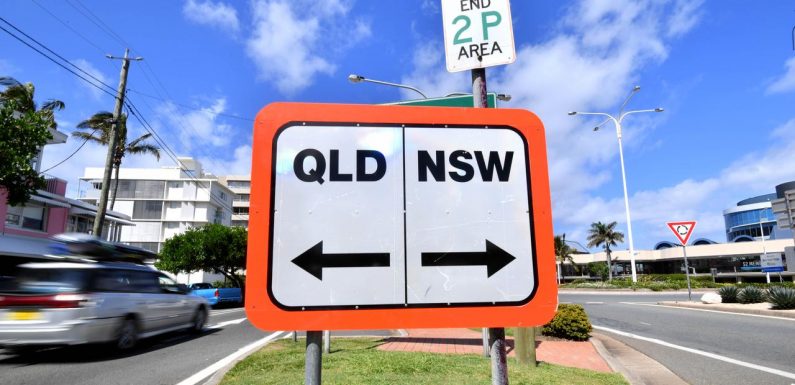
A $1.2 billion program encouraging Australians to travel interstate won’t necessarily mark the end of border shutdowns, a tourism expert warns.
Some 800,000 half-price airfares to holiday hot spots offered to Australian travellers in a billion-dollar federal government bid to revive the nation’s struggling tourism industry.
The discount will initially apply to interstate flights to 13 key regions, including tourism-dependent parts of Queensland and Western Australia, where notoriously strict border rules hit particularly hard.
Despite the massive investment in encouraging Australians to holiday interstate, tourism expert Dr David Beirman said he didn’t think the days of border closures were necessarily behind us.
“It would be nice to think that this package will signal the end to state border closures. Unfortunately the COVID-19 pandemic and state government responses to it have a life of their own,” Dr Beirman, from the University of Technology, Sydney, told news.com.au.
“While the expansion of the vaccination rollout is likely to reduce the spread of the pandemic in Australia there is no guarantee that individual states will cease border closures or quarantine regulations in the event of a renewed outbreak.”
RELATED: How to get your half-price flight
Cairns is one of the Queensland destinations on the list for discounted flights. Picture: iStockSource:istock
RELATED: How cheap will flights get?
Queensland Treasurer Cameron Dick told ABC Radio National this morning the state reserved the right to shut its borders if necessary.
“We will act on the health advice,” he said. “Tthat’s been consistent the position we’ve taken all along and of course that was endorsed by the people of Queensland in the election last October.”
As intra-state flights weren’t included in the package, states that shut their borders would effectively be opting out.
Dr Beirman said he hoped the heavy presence of Queensland destinations on the discounted flight list, including the Gold Coast, Cairns, Whitsundays and Sunshine Coast, might encourage the state to keep itself open.
“As we have seen, several states, notably Queensland and Western Australia, have been very quick on the border closure trigger when an outbreak has occurred,” he said.
“However, the travel stimulus applying to key tourism destinations in Queensland especially may lead the Queensland government to take a more considered approach to lockdowns and border closures.
“Interstate travel needs more stimulus and rebuilding of confidence than intrastate travel, largely due to the disruptive impact of sudden border closures.”
Qantas boss Alan Joyce said he believed the scheme would be “an incentive for the states to keep their borders open”.
“And that’s important, because we can’t keep on going through the yoyo of the ups and downs of that,” he said.
Australia’s airlines have welcomed the stimulus package. Picture: Adam HeadSource:News Corp Australia
Prime Minister Scott Morrison called the federal stimulus package a “ticket to recovery”, saying it would “take more tourists to hotels and cafes, taking tours and exploring our backyard”.
“That means more jobs and investment for the tourism and aviation sectors as Australia heads towards winning our fight against COVID-19 and the restrictions that have hurt so many businesses,” Mr Morrison said today.
The package has been welcomed by Virgin Australia and the Qantas Group, which said it would bring more domestic crew to return to the skies after domestic air travel was derailed by the pandemic.
But the scheme has also attracted criticism, including from Flight Centre boss Graham Turner, who said it would mean little to tourism operators who were not on the selected flight routes.
He also questioned how effective the scheme would be in regions that were on the list but which relied heavily on international visitors, such as Far North Queensland.
“I am not sure this will make much of a difference to them,” Mr Turner said.
“This really is targeted to the aviation industry and maybe some tourist destinations … it certainly does not help us at all.”
Many tourism-dependant parts of Australia are still hurting from lockdowns and state border closures. Picture: Dan Peled/NCA NewsWireSource:News Corp Australia
ACCOR chief executive Simon McGrath said the scheme ignored the nation’s big cities, which accounted for 60 per cent of the nation’s hotel accommodation.
“The reality is we’ve got 60 per cent of hotel stock in Australia in the CBD locations and the cities are operating around 20 or 30 per cent occupancy, so it pushes the travel out from those cities and does not address that major issue,” he said.
Dr Beirman said he believed the benefits of the scheme would filter down to accommodation, attraction and retail sectors in the targeted destinations, but felt much of the nation’s struggling tourism industry had been overlooked.
“While those destinations which are included will have good reason to be happy about the development, many popular Australian regional tourism destinations miss out,” he said.
“The stimulus measures are a welcome development but they are effectively a bandaid treatment to an all-of-tourism-industry problem.
“Until international tourism to and from Australia resumes it will be a case of tourism limping along until international borders re-open.”
trending in travel
Source: Read Full Article













